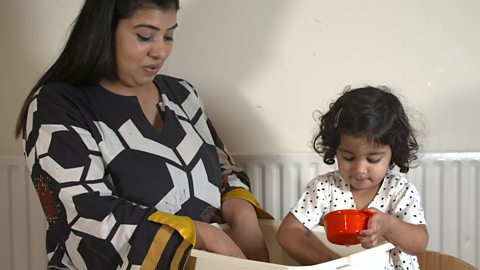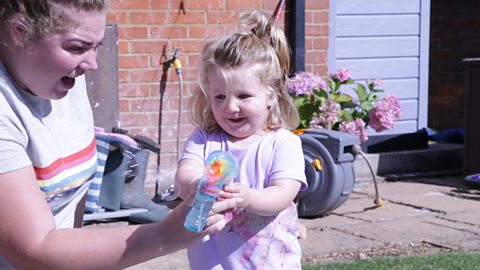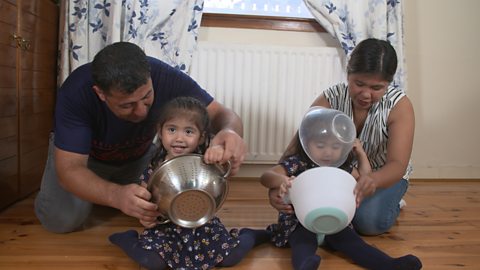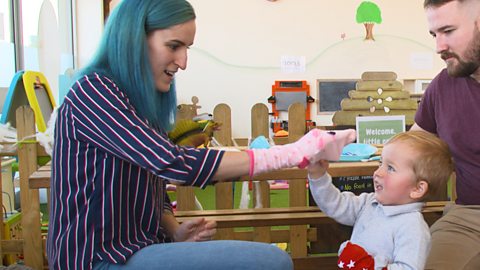Home > Activities > 2-3 years
Children start to tune into faces from the day they are born. They start to recognise the extra cues we give when we are communicating such as making eye contact, facial expressions and body language.
Making faces with your toddler helps them to express their feelings and learn new words.
You can help them boost their understanding of different emotions by drawing faces on a piece of paper and talking about them together.
Watch the video below to discover how you can help your little one to express their emotions.
What are the benefits of making faces with your little one?
- Talking about different faces helps your child to express happy and sad feelings and learn new words.
- Naming facial features teaches kids to connect words with things they can see and feel.
- Pulling faces together will encourage your little one to think imaginatively and express their emotions.
- This game benefits listening and interaction skills as well as taking turns in a conversation.
- Making faces helps children pick up on body language and facial expressions linked to certain feelings.
- Drawing supports muscle and hand-eye coordination.
How to make the most of making faces with your little one
Take turns making or drawing faces with your little one. You can make them happy, sad or shocked. See if your child can guess what face you are pulling or have drawn.
As you make faces, ask your little one what type of face you are pulling, this can help them to label emotions and recognise how people might be feeling.
You could ask them to copy your facial expressions or let them show you how they feel with their face.
This is also a great opportunity to talk about and name your facial features and body parts.
You could also try including some counting during the making faces game. Count down from three before you make the face. Say, "3, 2,1 smile!"
If you want to extend this activity, you can help kids look through photos on a phone, in a family album, or in a magazine.
Point to different people, including kids, and name whether they're feeling happy or sad. You could describe the picture and try and work out why they might be feeling this way. You could say, "Uncle Brian was happy because it was his birthday."
Encourage your child to describe each facial feature and then draw it.
Find out more about your child's emotional development
- Want to know how to help children understand their emotions?
- Have you ever wondered why children have temper tantrums and what can you do to help them?
- Life is rarely straightforward, but here are some tips on how to help your child deal with uncertainty and change.






